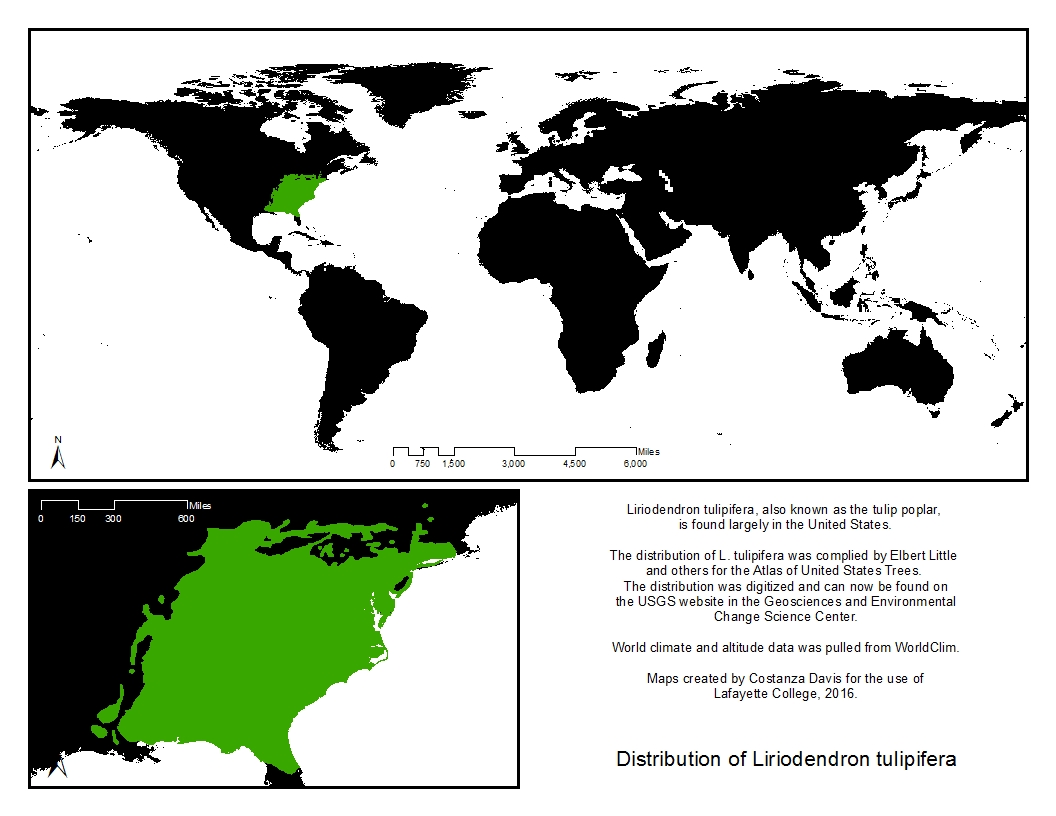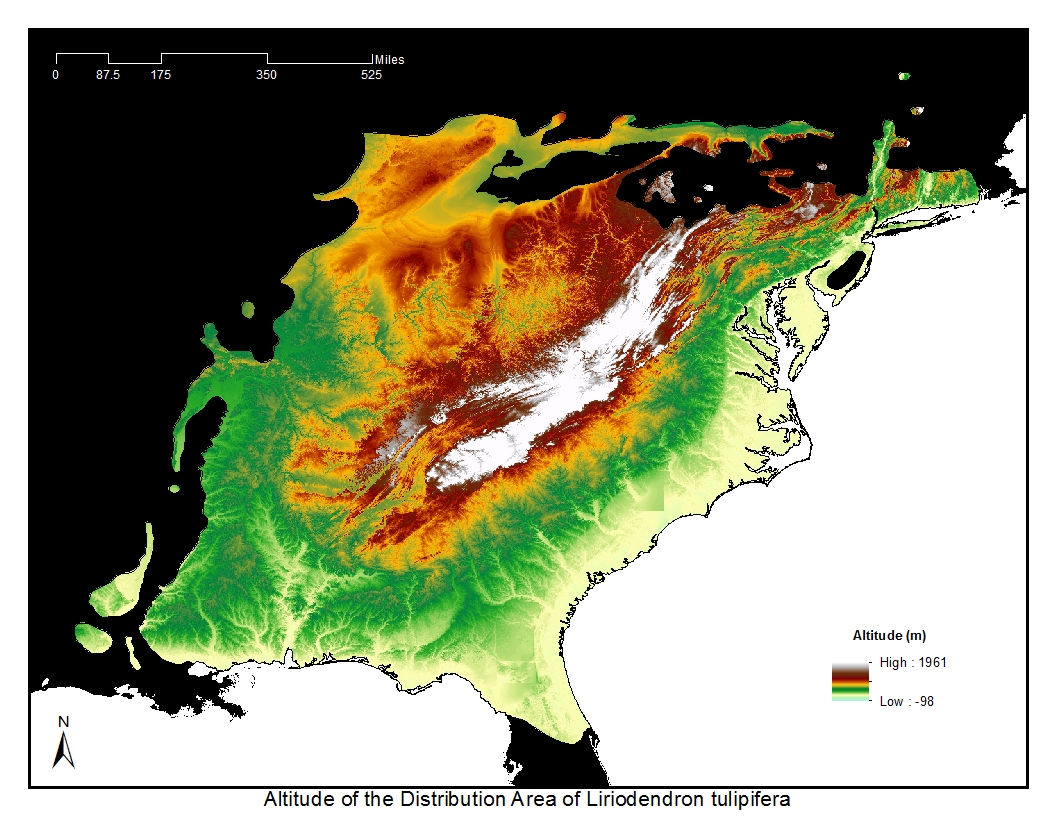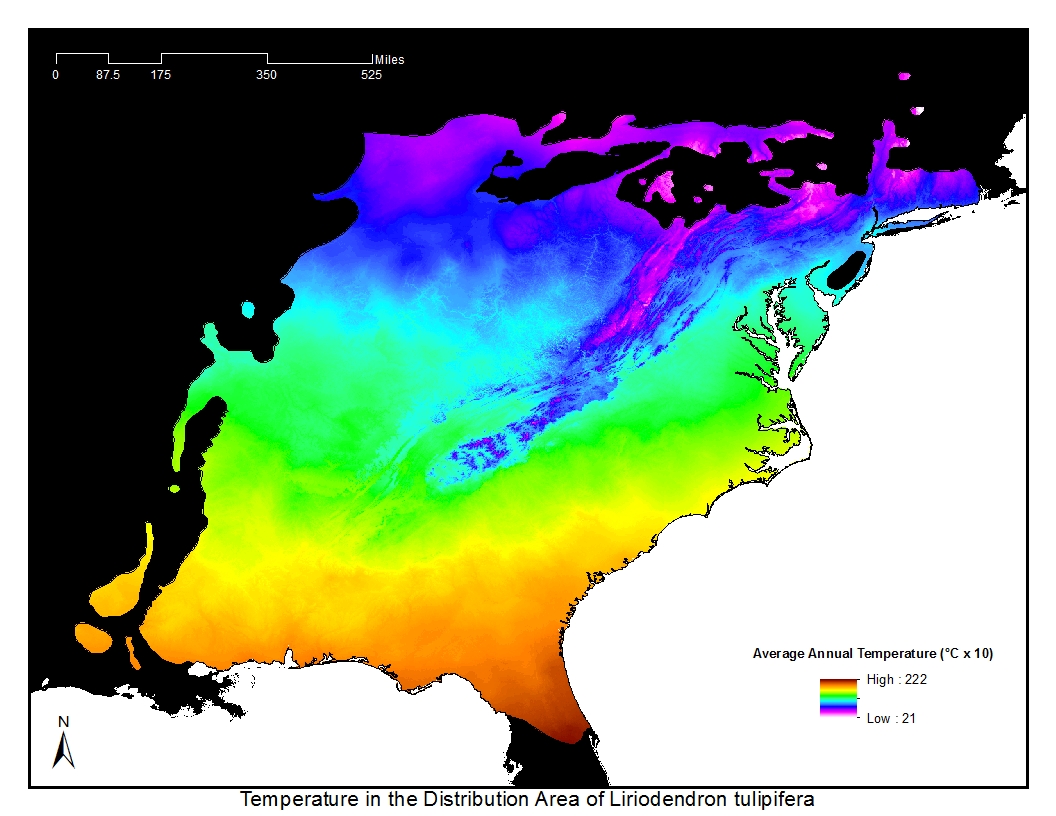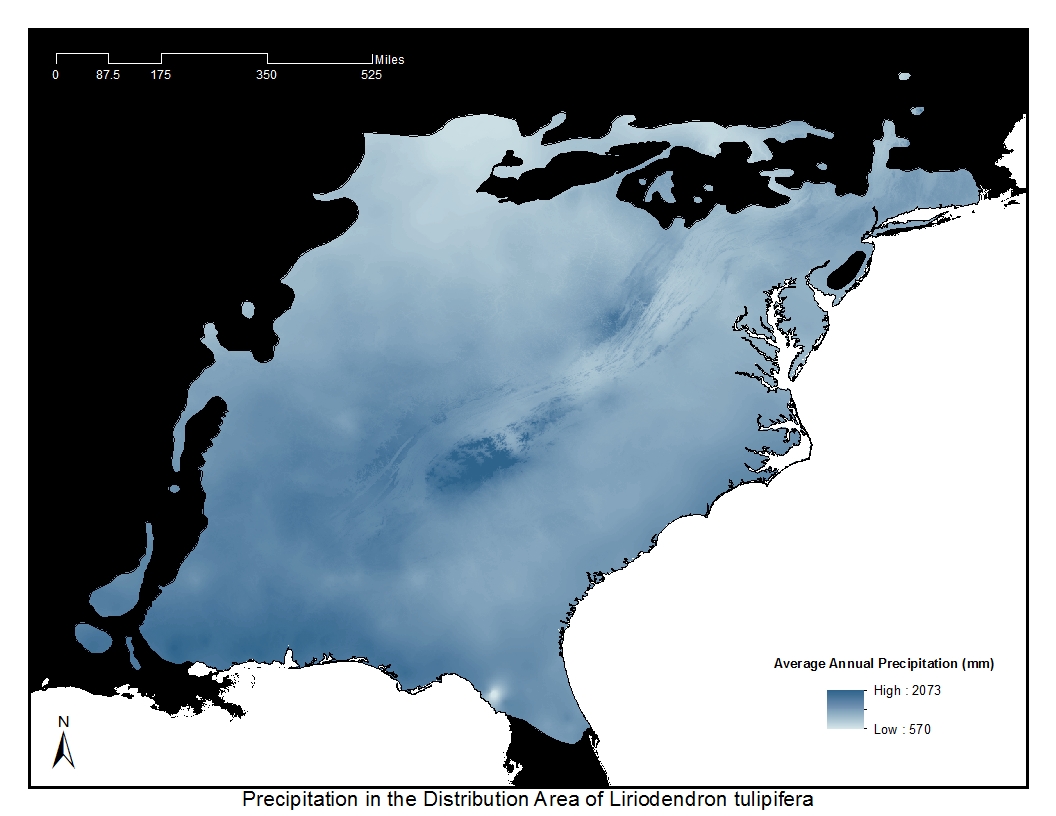Tulip poplar, Liriodendron tulipifera, is also known as yellow poplar, tuliptree, white poplar, and whitewood. This tree has a tall, straight trunk with no lateral branches beneath a certain height, and is taller than any other Eastern United States broadleaf tree. It can grow up to 200 feet in height with an 8 to 12 foot diameter trunk. The tree often lives 200 to 250 years, but can survive to 300 years.
While its distribution stretches across the Eastern United States, the tallest tulip poplars and most abundant groves are found in the valley of the Ohio River as well as on mountain slopes.
Because its distribution is so expansive, tulip poplars have been known to face a wide variety of climates, from harsh winters to mild, almost entirely frost-free winters. The average number of frost-free days reflects this, ranging from 150 to 310 days.
A notable impact of preferred climates and conditions is the local topography in which the tree is found. Further north it prefers lower elevations of under 1,000 feet when compared to its typical appearances in the southern Appalachians, where it is more abundant on higher slopes. Further south, where temperatures are highest, it prefers moist, low elevations near streams.
Overall, the tree appreciates moist, well-drained soils and does best when rainfall is distributed evenly throughout the growing season. The tulip poplar prefers loose textures soils and does well on alluvium, talus slopes, and gravelly soils. While there have been some correlations between chemical properties of the soil and growth, tulip poplars are much more depended on physical properties. The trees prefer lower slopes or sheltered coves. The best slopes are concave with a lower gradient and a north or east aspect.
Tulip poplarshave distinctive flowers, which bud as individuals along the branch. Each flower is 1.5 to 2 inches wide with six petals. The center of the flower is greenish yellow, and the petals are each a similar greenish yellow with an orange band running horizontally through the center. Flowers first appear when the poplar is 15 to 20 years of age, and will appear annually for a further 200 years, between April and June, lasting for two to six weeks. While insects often pollinate, self-pollination also occurs. Seeds then fall from mid-October to mid-March. Tulip poplar produces a large number of seeds, which are produced in cones with perhaps an average of 8 to 10 viable seeds per cone. Seeds are larger in the southern portions of the distribution area.
Though shade intolerant, tulip poplars grow fast and produce large amounts of seeds, letting them dominate areas easily. It is also remarkably unaffected by insects.
The tulip poplar is often used commercially for its versatility and is a good source of food for wildlife. It is also an excellent honey tree, capable of producing 8 pounds of nectar (4 pounds of honey) per season even below the age of 20.




